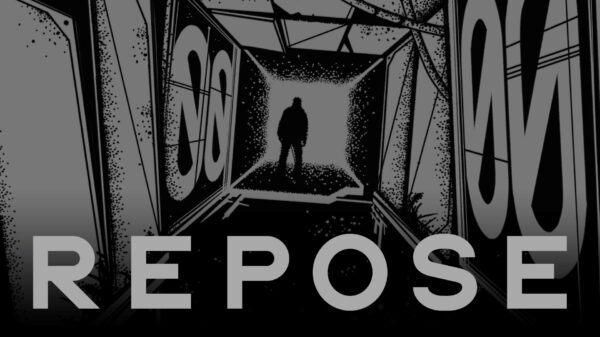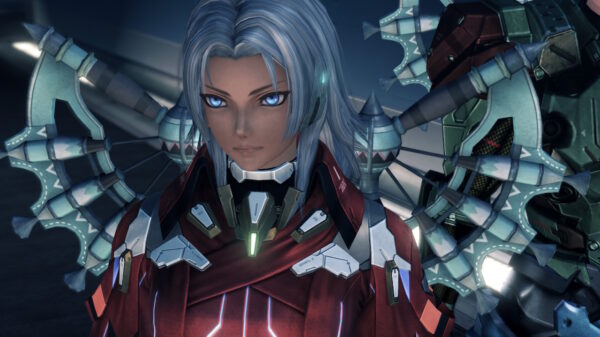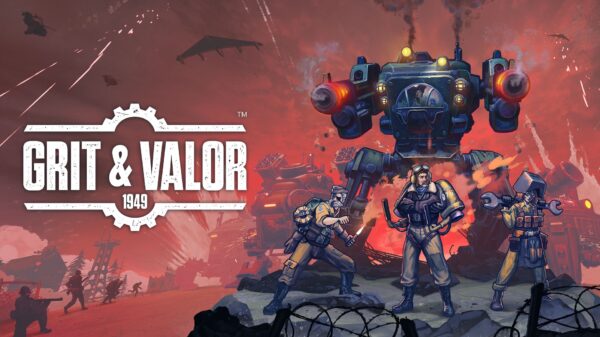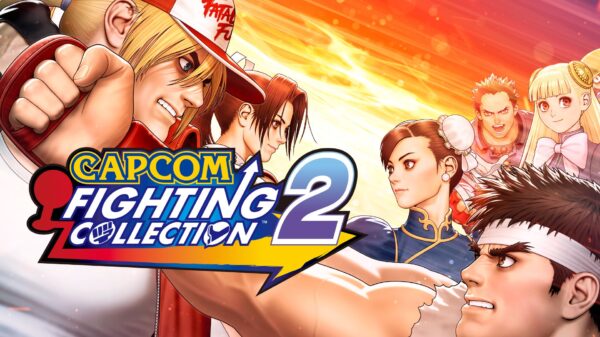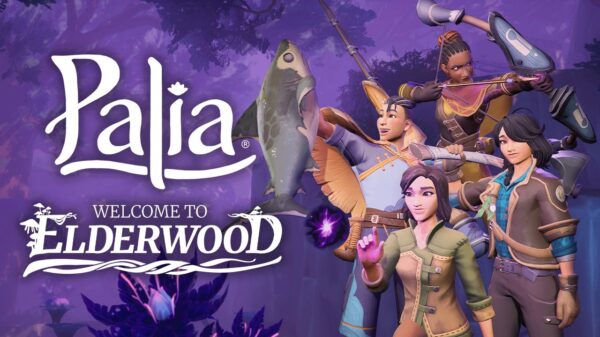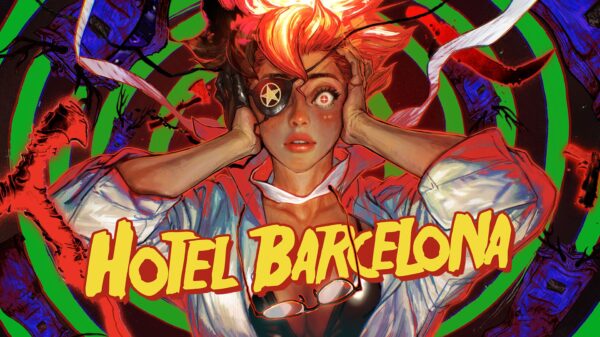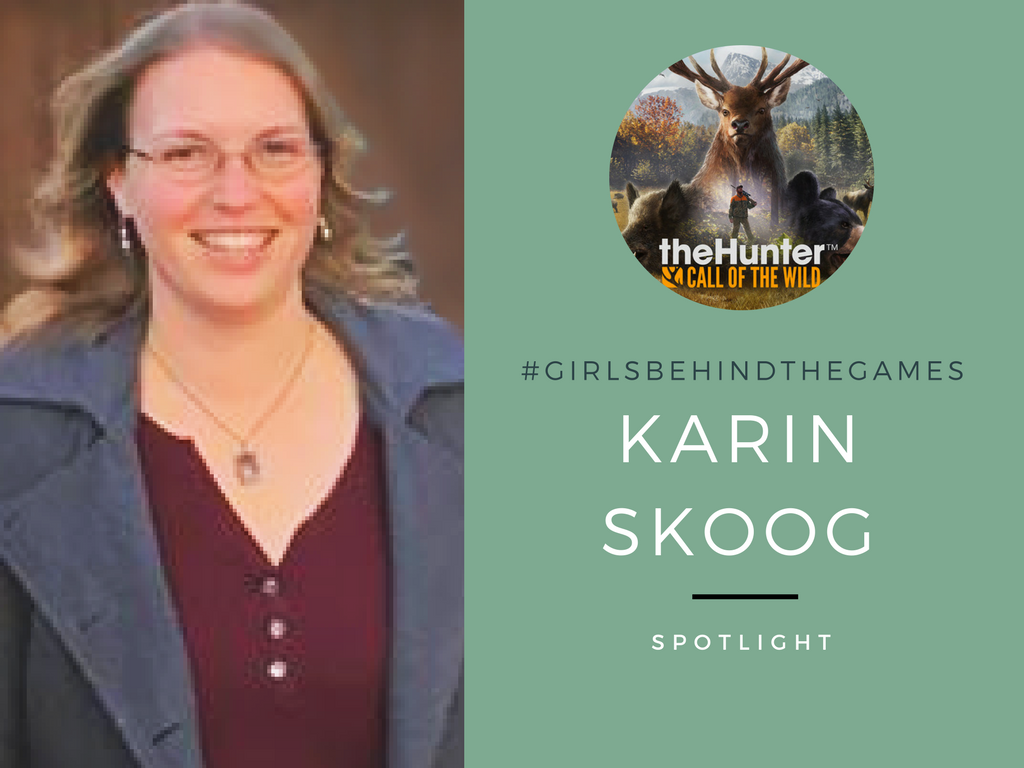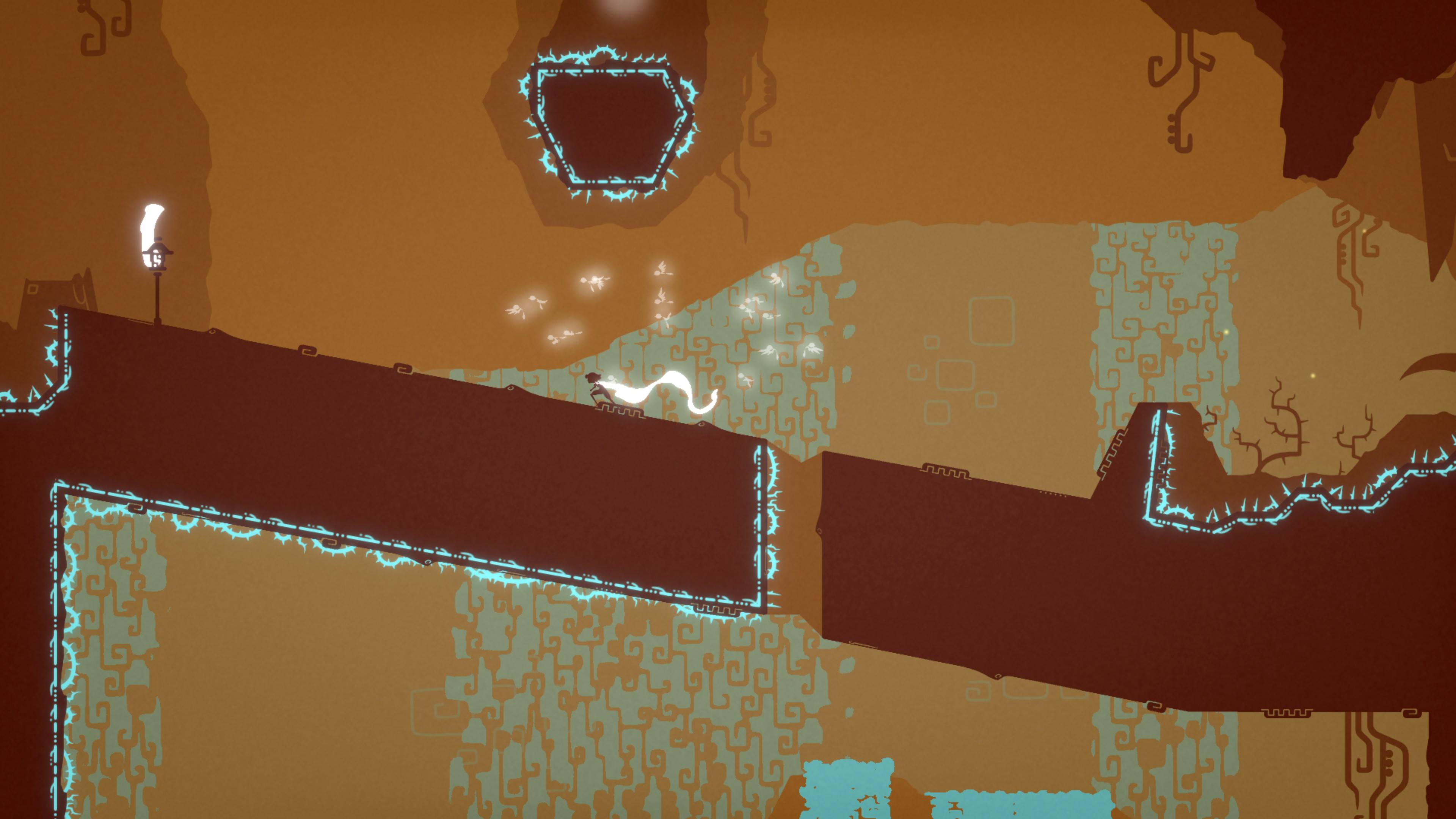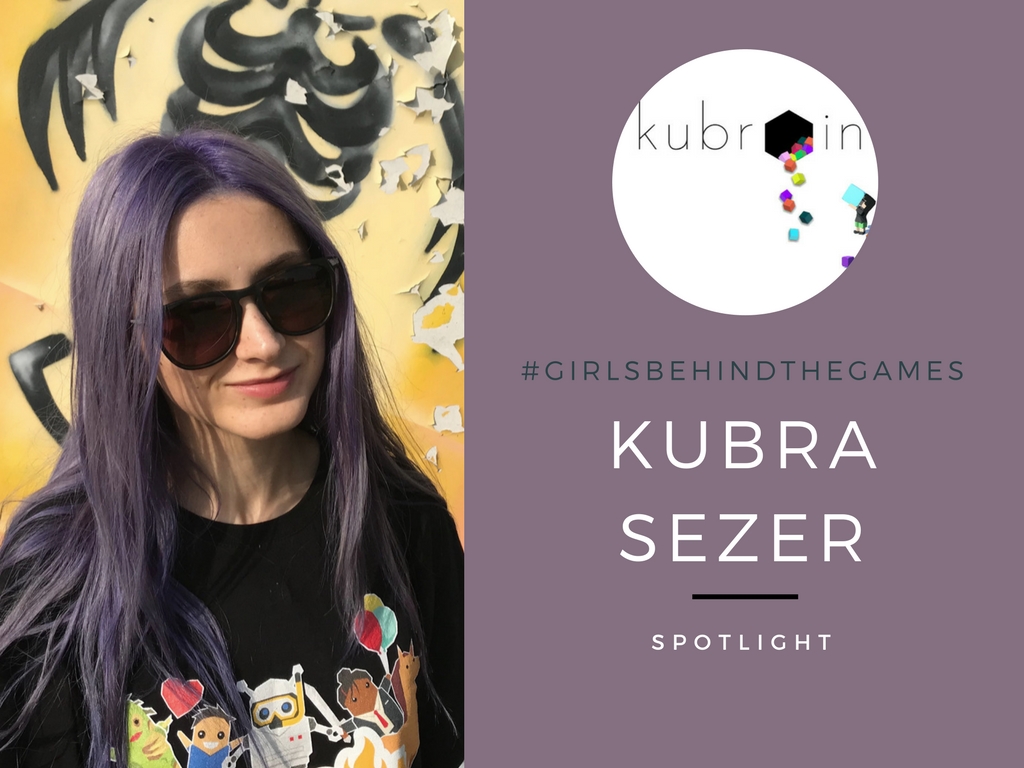Our second #GirlsBehindTheGames spotlight is Karin Skoog! Karin previously worked in AI & Game Design, but is now focusing on developing a narrative-focused indie game while traveling all around the world.
Be on the lookout for more #GirlsBehindTheGames spotlights as we approach International Women’s Day on March 8th!
Tell us a little about yourself.
My name is Karin Skoog, and I’m originally from the San Francisco Bay Area, although I haven’t spent much time there over the past few years!
My professional journey has taken me around the world – I currently develop a narrative-focused, independent game while traveling across the Asia Pacific. (Since Nov. 2016, I have traveled nonstop across 7 countries – Korea, Thailand, Vietnam, Cambodia, New Zealand, Australia and now Malaysia.)
I also work with developers & publishers globally as an AI/Game Design Consultant & Narrative Design Consultant.
Previously, I worked on AI & Game Design for Avalanche Studios in Stockholm, Sweden. (Avalanche Studios is best known for Mad Max and the Just Cause series.) You can check out a detailed article I wrote about my experiences designing realistic animal AI for theHunter: Call of the Wild.
Prior to Avalanche, I worked in numerous disciplines across the games industry, including as a games journalist, Narrative Designer, Localization Marketing Specialist and Designer/Producer hybrid (for visual novel games at a Japanese company). I also have 3 diplomas, including in Game Design and a MBA in International Management.
How/when did you get interested in video games? What are some of your favorites?
I have been playing video games since I was young. I started out with the Gameboy, SNES & N64. Some of my favorite games were Star Fox 64, GoldenEye 007, Super Mario World and of course, Oregon Trail.
I also grew up with a lot of educational games. Now that I think back, I’m impressed by the game design and storytelling in some of the educational games I played! The designers did an amazing job of keeping kids engaged while still learning. The Super Solvers series in particular, was fantastic, including games like Midnight Rescue and Gizmos & Gadgets. I played Gizmos & Gadgets again years later and was impressed with the progression system, as well as the open design of the game and how mini-games introduce educational concepts such as constructing gears, magnets, circuits and energy types.
Strangely enough, I remember a party at my house from when I was around 9 and a group of boys asked if I had any video games. I said, “Sure! I have Midnight Rescue, Gizmos & Gadgets…” (I somehow forgot about my small library of non-educational games!) Their response was something along the lines of, “Oh, so you don’t have any real games.” At the time, I had no idea what they meant!
Although I played games most of my life, there was a short time period during my teenage years where my thinking about games shifted, and I suddenly saw them as a pastime for boys. (From what I’ve heard from other women, I’m not the only one who experienced that perception change.)
My friends eventually persuaded me to try Final Fantasy X and I was quickly entranced by the world and amazed to discover that video games could also tell stories. From that point on, I never questioned whether games were a medium for everyone to enjoy.
Nowadays, I play a lot of puzzle games (Stephen’s Sausage Dog, The Witness), strategy/simulation games (the Civilization series, Democracy), platformers (Super Meat Boy), narrative games (What Remains of Edith Finch, Firewatch).
How did you get involved in AI/Game Design? What (technical) skills do they require?
During my Game Design education, I gave a lot of thought to what I wanted to do next in my career. At that point, I had already worked in the industry within multiple capacities (including as a Designer/Producer hybrid, Narrative Designer and Localization Marketing Specialist).
I quickly realized that AI Design had always fascinated me, so I decided to specialize in AI Design/Scripting, frequently meeting with an AI Designer at EA DICE to “talk shop” and discuss my specialization project (a vertical slice, AI level in Unreal Engine 4). I applied to a couple studios as an AI Designer, received a few offers and ultimately decided to work on AI & Game Design at Avalanche Studios, using the studios’ in-house behavior tree tech to create behavior across various animal species. (Behavior trees are a way of scripting behavior across AI agents.) You can check out the detailed blog post I wrote about designing realistic animal AI for theHunter: Call of the Wild on my portfolio.
What fascinates me most about AI Design is how game design and storytelling can be expressed through AI – not just through companion characters, but also with ambient NPCs. Some of the industry talks and presentations that inspired me most include Max Dyckhoff’s presentation “Ellie: Buddy AI in The Last of Us,” Hendrik Skubch’s “Not Just Planning: STRIPs for Ambient NPC Interactions in FFXV” John Abercrombie’s “Epic AI Systems and Director in Fortnite” and John Abercrombie’s “Bringing Bioshock Infinite’s Elizabeth to Life: An AI Postmortem.”
As with most every aspect of game development, there is no one “correct” way to design or implement AI. However, there are a few frameworks commonly used for AI Design. Generally, AI work involves some sort of scripting or programming, though the actual tech (scripting language, etc.) varies between projects and studios. Studios commonly require game design and scripting experience for a role in AI Design, although there is also a lot of crossover with programming and AI design as well.
With some systems (such as behavior trees and finite state machines), the designer has more precise control over AI behavior – each agent has a predictable outcome, depending on specific inputs.
A framework that particularly interests me is utility-based AI (which was used in The Sims) – As a designer, you specify parameter ranges, and then the system decides under which circumstances an agent should transition from one behavior to another. This can make for some incredibly complex and nuanced behavior!
For example, if an enemy has low health but is close to an enemy on one side and cover on the other, should the enemy try to stealth kill the player, or should the enemy strafe to cover? With a utility-based system, even the designer isn’t sure what the agent will decide! This can make for more dynamic and varied playthroughs.
(If you’re interested in learning more about different kinds of AI systems, you can check out Dave Mark’s article, which includes a great overview of different AI architecture.)
What projects are you currently working on?
I’m currently working on a narrative-focused indie game. It’s still fairly early in development, but the current plan is to pitch to investors/publishers later in the year and at some point, find an artist to bring the game’s visual style to the next level.
What past projects are you most proud of?
My AI & Game Design work for theHunter: Call of the Wild. There’s an incredible amount of work that goes into designing and creating realistic animal behavior! It’s pretty incredible that the game was named one of the top 100 Steam games of 2017 by Rock, Paper, Shotgun and is played by thousands of players worldwide!
I’m also proud of the Narrative Design work I did on visual novel games and an indie JRPG. It’s an amazing feeling to develop characters and a world entirely from scratch, bring that world to life and then see thousands of players enjoy the worlds you create!
How does your experience at Avalanche Studios compare to what you’re doing now—traveling around the world making indie games?
It’s a very different experience! The team dynamics were amazing at Avalanche, and I enjoyed working with so many people to bring the animal AI to life, including programmers, world artists, animators, narrative designers, other game designers. It takes a lot of people to create realistic AI!
Before I started this globetrotting journey, I had no idea how much I would miss having a proper work desk! I generally make do with whatever I can in new locations. (In Korea, that meant a bedroll on a heated floor with lap table, but I kicked it up a notch in Thailand and frequented a coworking space.)
As an indie developer, I have a ton of flexibility in my work. I am constantly learning new tools and skills – I have to since I’m part of a 2 person team! (Well, sometimes a 1.5 person team – my indie dev partner-in-crime, Manne Cederborg, is a frequent collaborator but is busy working on his own game as well.)
As a whole, indie development is more challenging than I expected it (but in a good way!). As Manne sometimes says, “It’s like building a car when you only know how to make a wheel.” There’s a big difference between focusing on one aspect of development in a big studio, versus having your hands in nearly every aspect of indie development. In an indie environment, I’m constantly picking up skills I never thought I would use, such as art and animation. It gives me an even greater appreciation for all of the time and effort that goes into each part of making a game. Just one aspect of game development is very time consuming!
The nomadic indie developer lifestyle is absolutely the experience of a lifetime! I never imagined I would see so many countries and have all of these amazing experiences. I am constantly inspired by the places I visit, and some of that inspiration has made its way into my game.
I’ve also been lucky that in most countries, I’m able to meet up with other game developers, including other nomadic developers
It’s hard to imagine going back to a lifestyle where I’m not living out of a suitcase…but at the same time, I am looking forward to buying a proper work desk and chair at some point within the next year. Not too soon though!…I still have a few more places in the world I’d like to see first.
Do you have any inspirations in the game industry?
Of course! I’ve been inspired by many different people along the way. We’re at a point now where games have been around for a few decades and so many amazing people have helped propel the industry forward.
I am particularly inspired by games that combine storytelling and design (such as What Remains of Edith Finch) and developers who push the bounds of what games can be – such as Alexander Bruce’s Antichamber and Jonathan Blow’s Braid and The Witness (plus his many fantastic presentations, which I highly recommend).
What’s your favorite aspect of the game industry? Your least favorite?
My favorite part of the game industry is waking up every morning and getting to do creative work that feels meaningful. I am grateful that the industry is at a point where solo indie development is an option (thanks to the widespread availability of low cost tools and engines), plus gamers & investors are looking for games that aren’t necessarily the same as ones we’ve experienced before. This makes it possible to approach investors with just about any game and have a greater chance of getting access to funding, marketing support, etc.
My least favorite part of the industry…I suppose that the industry isn’t a valid option for many people still, especially since there are some studios that overwork employees and job security is never guaranteed. However, the fact that job security isn’t a given (even in larger studios)…it does make indie development seem less crazy overall. As an indie developer, you are very much in charge of your own destiny. Your job security isn’t dependent on if someone else is able to create a sustainable work environment. It’s entirely in your hands.
What’s that one (career) goal you continue to chase?
For years, my goal was getting into the game industry and learning how to make games. Now that I accomplished that, my current goal is to ship a game that feels meaningful (which is hopefully the game I’m working on now!).
How do you feel about the #GirlsBehindTheGames campaign?
I sincerely hope it inspires more young women (and anyone else who’s interested!), to pursue a career in game development. Sometimes, all it takes is connecting with one person’s story to help you see that you, too, can make games.
It took me a long time to realize there were actual people behind the games I loved. When I was young, I often asked my family who made the board and card games we played. Usually, I received an answer along the lines of, “Some big company…It says Hasbro on the box. I really don’t know.”
I hope more people see that it’s absolutely possible to make games! You don’t need to know how to program or have a degree. You can start making games right now! Just grab some dice and paper and make something, anything! (Cards Against Humanity was made by a group of high school friends for example.)
All that’s standing between you and a completed game is your imagination, and practice. Not even the pros are able to make shippable game without iteration – and a few failures! – along the way. Failure & iteration are how your game improves!
What advice would you give to women who want to work in the game industry?
Never stop learning and never give up on your goals. Making games is hard work, but keep at it – everyone was a beginner at some point!
It can be intimidating at the start. Programming may look like it was written by an alien and very little makes sense. It might feel like others are inherently better at coding or pick up skills faster than you, but that’s okay! Learn at your own pace, figure out what works best and go from there.
Despite what you may read or hear – there is no one correct way to make a game – no magic language or engine. Some people may talk a lot and sound like there’s one proper way to program or do game development, but that isn’t the case.
Overall, people in the games industry are generally very friendly and helpful! Most people are more than happy to answer any questions you have about their field or even provide mentorship. Reach out to developers you look up to (via Twitter or elsewhere), or volunteer at an industry conference – you’ll get a free conference pass out of it and can meet a bunch of developers all at once (GDC, Casual Connect, etc.).
The games industry is an inviting place for female developers. To be honest, it’s usually only people new to the industry who question whether I belong there (more than once I’ve been asked, “Do you even play any games, you know, other than Candy Crush?”). People who have been in the industry a while have likely worked with more than a few talented female developers, so gender isn’t an issue.
What helped me get started with making games was attending a Women Who Code meetup in my area. (I wrote about my experiences on their blog.) It was the first time I had been in a room of 50+ women who were all interested in making games! For me, it was a different experience than the development groups I previously attended, where I was one of few women (or the only woman) in the bunch. It was a very collaborative environment, with women working together together to make their first small pieces of a game. It was a stepping stone in seeing that it was possible to take a small goal, read the documentation and get something working (and also know that I wasn’t alone in having no idea what was going on!).
Sometimes, it just takes the right environment, or a different way of learning, to get past the initial barriers of making a game.
Is there anything else you’d like to say?
I sometimes blog about my globetrotting and game development experiences. You can sign up for our (very infrequent!) newsletter.
You can also follow me on Twitter to find out where I am in the world, say hi or stay updated on my indie development progress. Later this year, I’ll write up an article about my experiences being a digital nomad + indie developer, which I’ll post on my Twitter account.
Thanks for reading! I’m always open to answering questions about getting into the industry, portfolios, anything really. Just send me a tweet @KarinESkoog!



